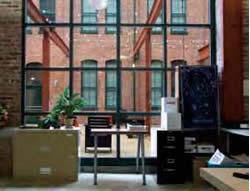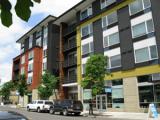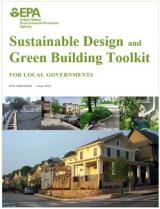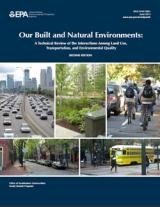Location and Green Building
On this page:
Background
- Green building is the use of approaches that create buildings and development that are environmentally responsible and resource-efficient throughout a building's life cycle, from site selection to demolition or reuse. Throughout this life cycle, there are many opportunities to make a building or development greener and more energy and water efficient.
- Using smart growth principles and strategies can reduce the environmental impacts of buildings and development and enhance the community’s health and economy. Smart growth strategies, such as building compactly and putting a mix of uses close together, help protect the natural environment by using resources more efficiently and making it easier for people to drive less if they choose.
- Compact development creates less impervious surface per unit of development. Coupled with green building and green infrastructure techniques that capture and filter rainwater, it can reduce polluted stormwater runoff and protect water quality.
Location-Efficient Siting
- Location is a crucial component of green building practice, as how people and goods get to and from the site affects the environmental performance of the building and its occupants. Choosing a location that offers transportation options and a variety of nearby destinations:
- Protects air and water quality by reducing the distance people have to drive and making it easier to walk, bike, or take public transit.
- Preserves open space, farmland, and natural lands by building on or near already-developed sites.
- Saves money and resources by using existing infrastructure.
- A location-efficient site is well-connected to the larger region and close to amenities such as employment centers, shops, restaurants, schools, and services. A site that has good transportation connections to the rest of the region can attract businesses that want easier access to customers and workers, and residents who want to be able to reach more jobs.
- Location-efficient sites are often in previously developed areas already served by infrastructure. Building in previously developed areas reduces the need for new streets, utility lines, water pipes, and other infrastructure. It can also spur neighborhood revitalization by reusing and renovating existing structures. Historic buildings, vacant properties, brownfields, and greyfields can be transformed into a green development that supports the local economy and strengthens the community's character.
EPA Resources
Technical Assistance
EPA's Office of Sustainable Communities provides technical assistance to help interested communities achieve their development goals, improve their quality of life, and become more economically and environmentally sustainable. The following technical assistance programs help communities consider green building-related challenges:
- Building Blocks for Sustainable Communities: Quick, targeted technical assistance using a variety of tools to implement smart growth development approaches.
- Smart Growth Implementation Assistance: In-depth technical assistance for tribal, state, regional, and local governments that are seeking help with a smart growth-related challenge.
Tools
- Tribal Green Building Toolkit (2015): Provides information on how tribes and other communities can prioritize and implement green building codes, policies, and practices. It includes a section on land use.
- Green Building Standards: Describes the major green building standards available for communities to use, including the International Green Construction Code, ASHRAE 189.1, National Green Building Standard, Green Globes, and LEED, and offers ideas on how to adjust these standards to maximize their smart growth elements.
- Smart Location Database: A National Dataset for Characterizing Accessibility and the Built Environment at the Neighborhood Scale: Characterizes several built environment and regional accessibility variables for every census block group in the United States. These data can be used in scenario planning, travel demand studies, and more.
- Sustainable Design and Green Building Toolkit for Local Governments (2013): Helps local governments identify and remove barriers to sustainable design and green building in existing codes and ordinances. The toolkit includes an assessment tool and resource guide, as well as a guide to developing a plan for implementing changes in a community's permitting process.
- Mixed-Use Trip Generation Model (2011): Spreadsheet tool that helps users estimate trips generated by a new mixed-use development.
- Smart Growth Guidelines for Sustainable Design and Development (2009): Helps users ensure that programs, plans, and proposed developments incorporate the elements needed at the location, site, and building levels to result in more environmentally sustainable, affordable housing.
- Smart Growth Scorecards: Can help communities assess their policies and proposed development projects.
National Award for Smart Growth Achievement Green Building Award Winners
From 2002 to 2015, EPA recognized communities that use innovative policies and strategies to strengthen their economies, provide housing and transportation choices, and protect the environment through the National Award for Smart Growth Achievement. From 2009 to 2011, the awards included a Smart Growth and Green Building category. Winners in that category were: A view from a Miller's Court apartment with its large windows for daylighting.
A view from a Miller's Court apartment with its large windows for daylighting.
- Silver Gardens Apartments, Albuquerque, New Mexico (2011): This 66-unit affordable housing development is on a reclaimed brownfield site in downtown Albuquerque across the street from the city's primary transit hub. Silver Gardens is the Southwest's first LEED-Platinum affordable housing development and the first affordable housing project in the nation to sell carbon offsets.
- Miller's Court, Baltimore, Maryland (2010): Miller's Court integrates mixed-use redevelopment with preservation of a landmark historic building and sustainable design principles, such as location-efficient siting, sustainable materials, water and energy efficiency, natural lighting, indoor air quality, and innovative design.
- Tempe Transportation Center, Tempe, Arizona (2009): This multi-use green facility is a transportation hub and gathering spot for the community that replaced a 2.7-acre surface parking lot.
Publications
- Our Built and Natural Environments (2013): Summarizes technical research on how development patterns affect human health and the environment and provides evidence that certain kinds of land use and transportation strategies can reduce the health and environmental impacts of development.
- Location Efficiency and Housing Type: Boiling It Down to BTUs (2011): Illustrates the relative impact of different development approaches: locating homes where less energy-intensive transportation options are available; constructing homes that use less energy because they share walls; and greening homes and cars through energy-efficient home construction techniques and fuel-efficient automobile technology. Its findings suggest that combining these approaches can achieve significant gains in household energy efficiency.



